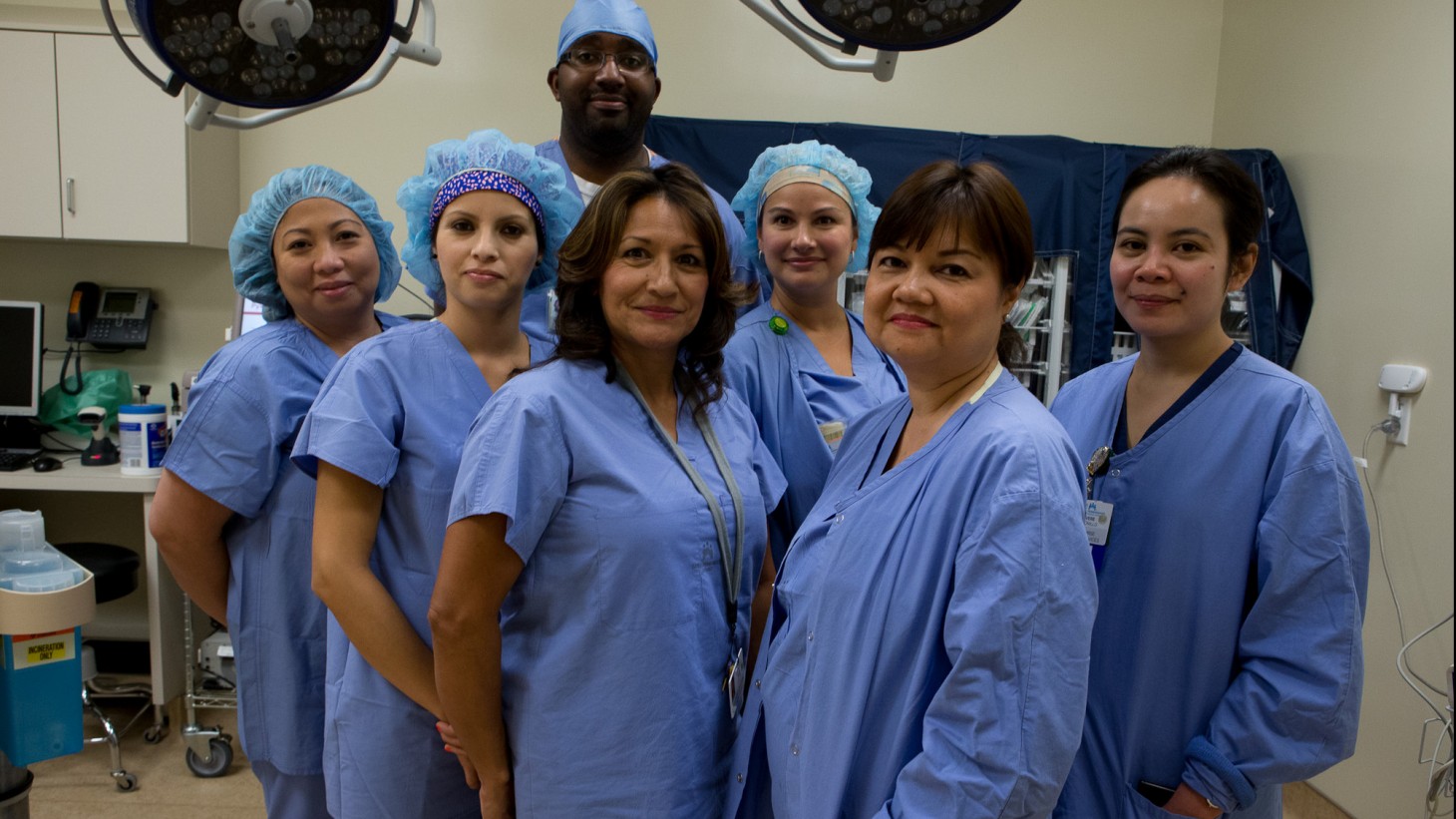Hank Winter 2016
See the whole issueA Mirror for Members

A diverse staff (like this team from the perioperative department at the Ontario Medical Center in Southern California) serving a diverse membership is a point of pride and strength for Kaiser Permanente.
Using the power of language and culture
Early in her nursing career, Yvonne Roddy-Sturm, now the chief nursing executive at Ontario Medical Center in Southern California, saw that caregiver diversity—or lack of it—matters.
“I saw differences in how some providers cared for people,” she says. “It wasn’t just based on race—economic status, language, lots of things came into play. We all make assumptions about others.”
The consequences of such assumptions are serious, impacting the quality of care a patient receives and leading to a wide range of health disparities.
In the 30 years Roddy-Sturm has been with Kaiser Permanente, our member and patient population has become more diverse—as has our workforce. And that’s helped KP deliver high-quality, patient-centered care.
“Patients who can relate to their caregiver are more likely to follow their treatment regimen,” says Roddy-Sturm. “They’re more likely to ask questions of people who are more like them.”
The Labor Management Partnership plays a significant role in building the skills, cultural competence and work environment needed to serve KP’s diverse patient population.
For example:
- Unit-based teams provide a more inclusive workplace and give staff members a safe place to speak up.
- Two LMP-sponsored educational trusts provide tuition assistance, paid time off and career counseling to help employees move up the career ladder.
And there’s more. Many departments, including Ontario’s nursing department, make their diverse teams part of the hiring process.
“We always start with the skills required to do the job,” says Roddy-Sturm. “Then our panel members bring their own insights and diversity to the discussion. They look for fit, flexibility, compassion and empathy, as well as skill. We try to live our values.”
The power of language and culture
Research shows that patients fare better when they receive care in their preferred language and providers demonstrate sensitivity and respect for their cultural beliefs and values.
Frontline teams across Kaiser Permanente are doing just that, and nowhere is this more apparent than in California, where 85 percent of KP’s Latino members live. The Northern and Southern California regions have developed language assistance programs that help eliminate health disparities and personalize the care experience for patients, including:
- Organizing frontline interpreters. The Qualified Bilingual Staff program, developed by National Diversity and Inclusion and pioneered by the Labor Management Partnership, enables eligible employees to serve as interpreters—often earning extra pay—in addition to their regular job duties. To qualify, employees must pass an assessment and complete required orientation. In Southern California alone, the program currently involves 8,000 interpreters who speak 10 languages.
- Seamless care in Spanish. The San Francisco Medical Center established KP’s first Spanish Bilingual Internal Medicine Module in 1997, composed entirely of bilingual and bicultural staff and providers. Unit-based teams have helped replicate the module region-wide, improving diabetes care and colorectal cancer screening rates for Latino patients.
- “Breast is best.” Studies show that breastfeeding benefits both mother and baby. But many Vietnamese and Latina members believe formula has more nutritional value. Staff members at the San Jose Medical Center decided to offer health education classes in Vietnamese and Spanish, get learning materials translated, and learn more about the cultural perspectives so they could address patients’ concerns. As a result, exclusive breastfeeding rates jumped by 15 percent for Vietnamese mothers and 6.5 percent for Latina mothers.
“When we show respect for our patients’ cultures and values, we are more likely to provide better care, because they trust us and are more likely to follow through on the instructions we give them,” says Andrea Rudominer, MD, senior physician for Pediatrics and chief of diversity for the San Jose Medical Center. “Culturally competent care leads to better health outcomes for all of our patients.”
